- California Assembly OKs highest minimum wage in nation
- S. Korea unveils first graphic cigarette warnings
- US joins with South Korea, Japan in bid to deter North Korea
- LPGA golfer Chun In-gee finally back in action
- S. Korea won’t be top seed in final World Cup qualification round
- US men’s soccer misses 2nd straight Olympics
- US back on track in qualifying with 4-0 win over Guatemala
- High-intensity workout injuries spawn cottage industry
- CDC expands range of Zika mosquitoes into parts of Northeast
- Who knew? ‘The Walking Dead’ is helping families connect
Damage from heavy rain continues to grow in S. Korea, leaving 15 dead, 11 missing
Damage from heavy rain in South Korea’s central region earlier this week continued to grow, leaving 15 dead and 11 missing as of Tuesday.
More than 1,000 were forced to leave their homes in the last four days, while some 7,192 hectares of farmland were swamped or buried as of 6 a.m., according to the Central Disaster and Safety Countermeasure Headquarters.
Most recently, deaths were reported in Asan, Pyeongtaek and Gapyeong, all in the central Gyeonggi and South Chungcheong provinces, as landslides engulfed a makeshift workplace and a mountainside accommodation.
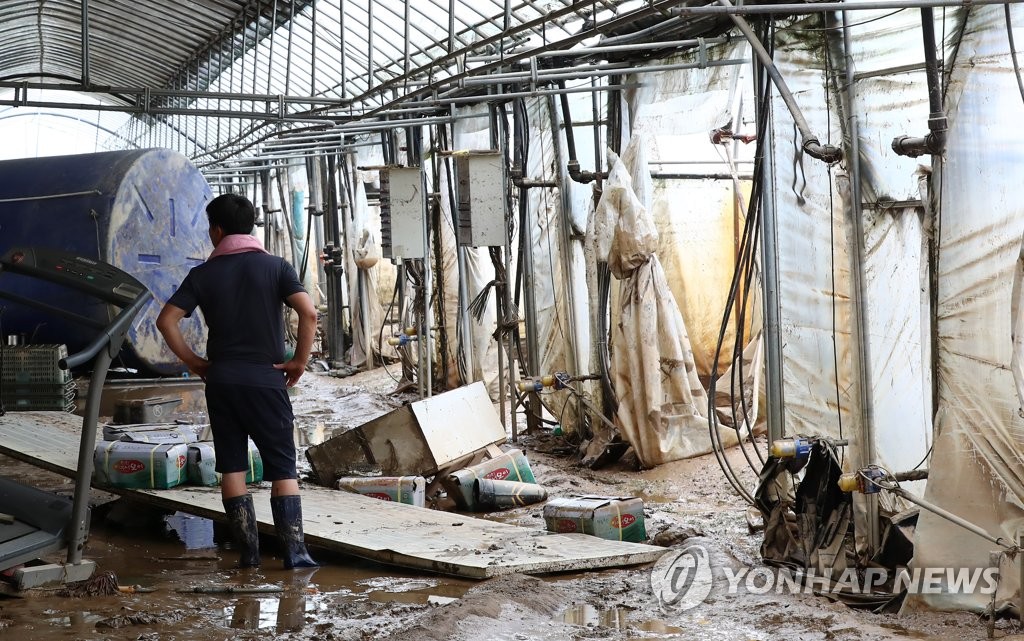
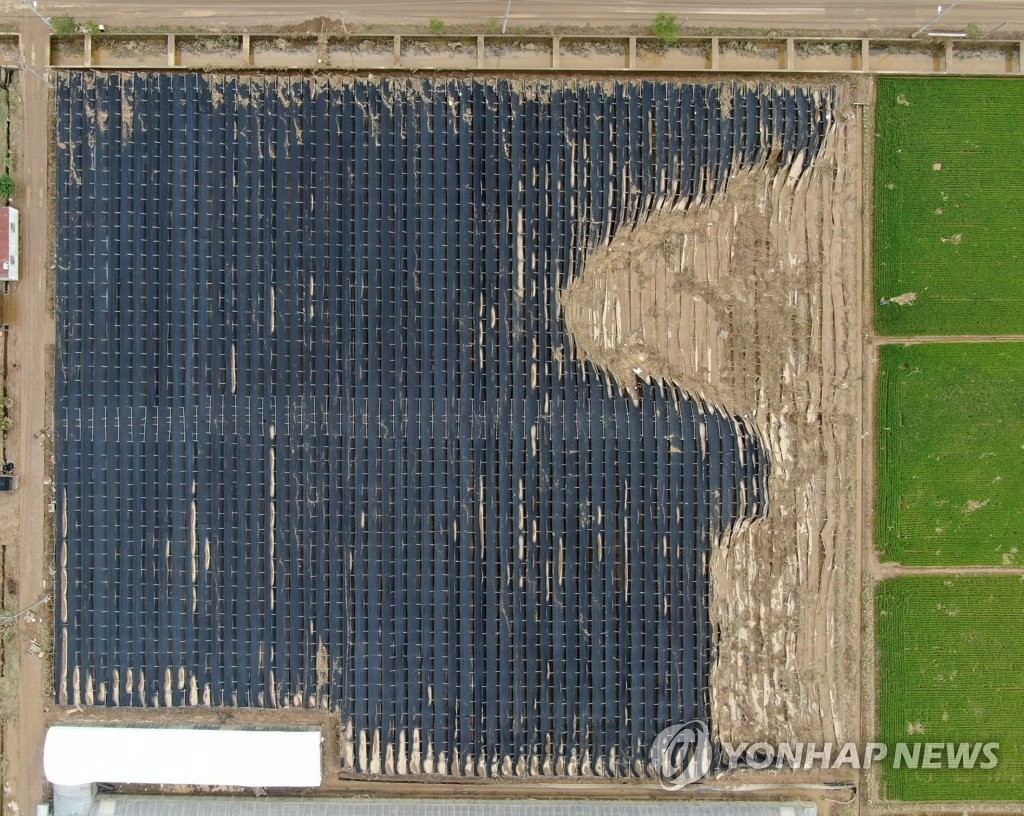

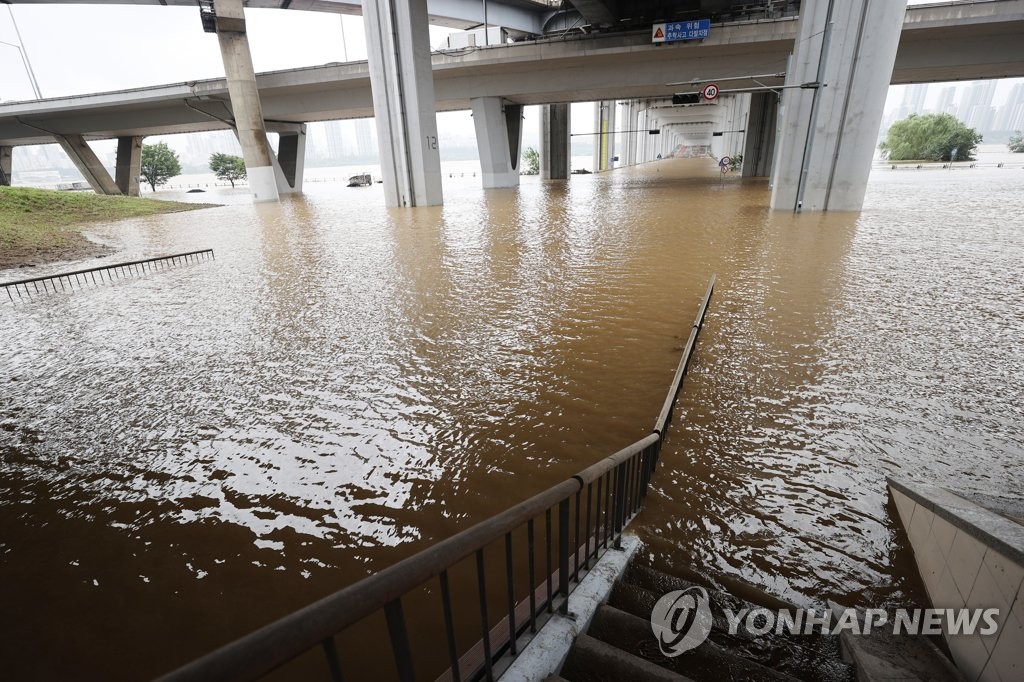
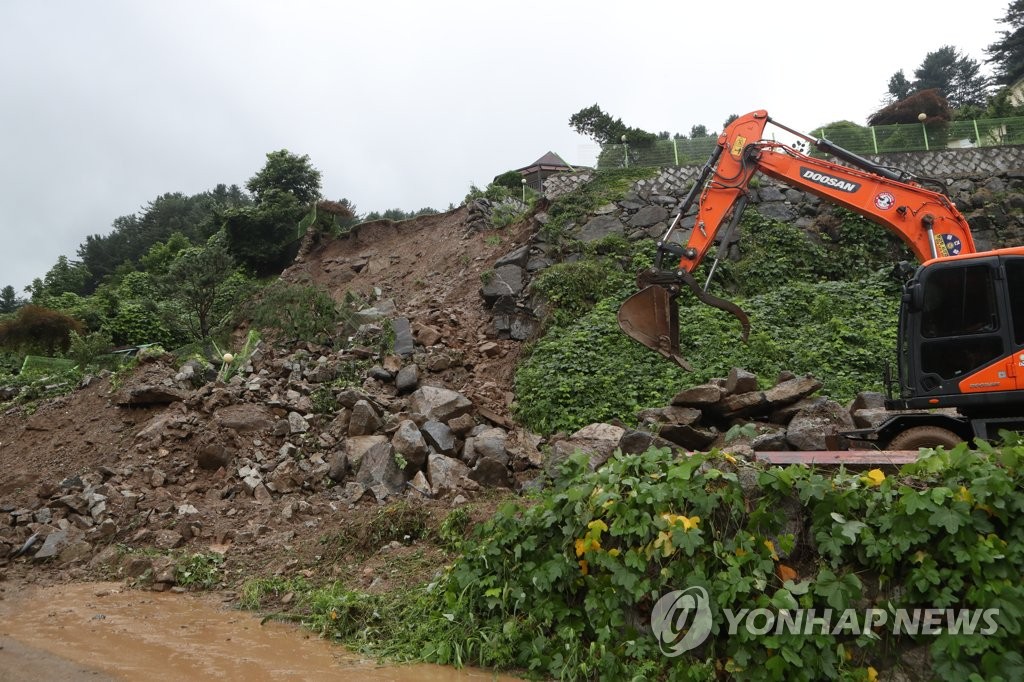

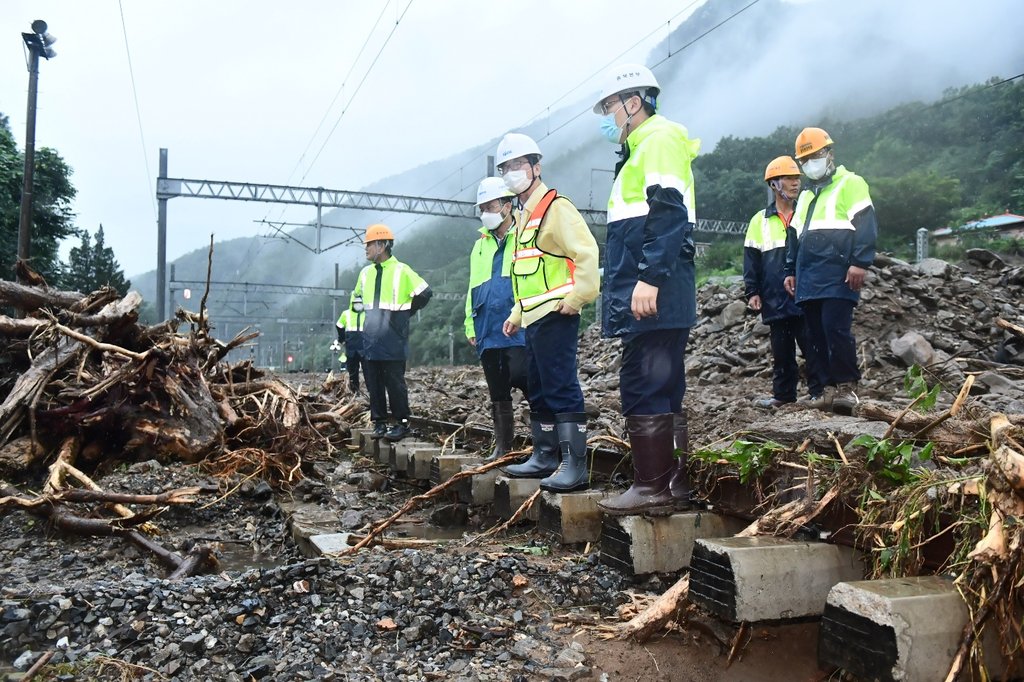
A farmer examines the damage at an agricultural facility in Cheonan, South Chungcheong Province, on Aug. 4, 2020. (Yonhap)
A man in his 50s, who went missing after falling into a manhole in Asan, South Chungcheong Province, was found dead. Two other men who were swept away by rushing water the day before were found dead.
Several other people were reported missing, including a man in his 60s who got swept away by water while driving a truck in Jincheon, North Chungcheong Province.
A total of 1,072 people from 648 households were forced to leave their homes. More than half of them were in North Chungcheong Province, followed by residents of Gyeonggi, Gangwon and Seoul.
Property damage continued to snowball, with 2,085 private assets and 1,921 public facilities suffering damage from the downpour.
Around one-third of the damage was reported at houses, while damage was also reported at warehouses, agricultural plastic houses and cattle sheds, according to the government.
Public facilities, such as roads and bridges, railways and water reservoirs were also destroyed.
Authorities have completed restoration of roughly half of the damaged properties, with more than 41,000 police and fire authorities, as well as volunteers, mobilized.
But some roads and railways — 40 roads and six railway routes, including the Chungbuk, Taebaek and Yeongdong lines — remained suspended.
In Seoul, most riverside roads that had entry restricted as water levels rose were back in operation, with the exception of Jamsu Bridge, which links the capitals’ southern and northern parts over the Han River.
Trekking routes at 10 national parks, including Mount Bukhan, Taebaek and Songni, as well as 16 underpasses and 92 parking lots adjacent to streams and rivers, remained under restriction.
In an emergency meeting held at Cheong Wa Dae, President Moon Jae-in urged relevant ministries to take preventive measures to the “extent that could be seen as excessive.”
Moon asked officials to put their best efforts toward prevention of additional casualties by restricting access to dangerous areas and evacuating areas preemptively. He also reminded officials to pay attention to possible landslides, while controlling dams and reservoirs to prevent floods.
Weather forecasts, meanwhile, showed that the downpour is likely to continue for the next few days.
Around 100-300 mm of rain was expected in parts of Seoul and Gyeonggi and North Chungcheong provinces, with precipitation hitting 500 mm in some areas.
“Due to a lot of rain, damage has been reported in the central region, prompting streams and reservoirs to overflow, toppling embankments and submerging underpasses. Outdoor activities should be refrained from as more damage is expected from rain,” the weather agency said.











